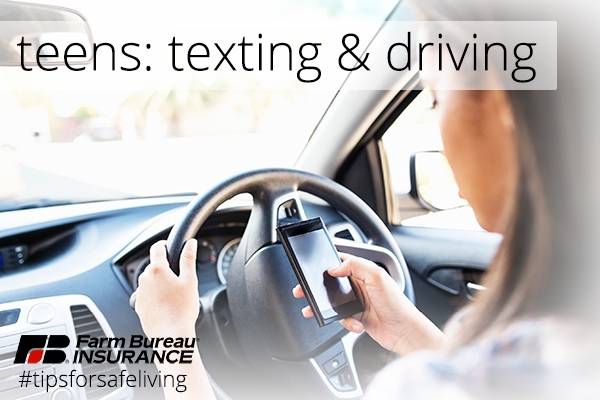As any parent will attest to, raising kids is challenging enough before they even think about driving an automobile. From baby gates & crib bumpers to dating & peer pressures, you’ve spent the last 15 years protecting your child and teaching them everything you know to keep them safe and healthy.
Once your teenager gets behind the wheel, you can’t always be there to help them make the right decision. This is why it’s important to educate your teen on the dangers of driving while using a mobile device.

National Highway Transportation Safety Administration (NHTSA) research found that texting causes drivers to take their eyes off the road for 4.8 seconds over a six-second interval. That means at 65 miles per hour, a texting driver would travel almost one-and-a-half football fields without looking at the road, essentially driving blind. That driver’s brake reaction is reduced by 18% and they are 23 times more likely to get in an accident.
In fact, according to NHTSA, texting while driving is an equivalent impairment to drinking 4 beers. The newly-formed urban term “intextication” refers to just that.
Texting while driving is dangerous at any age, but a 2013 AAA survey reported that 60% of America’s driving teenagers said they had texted or emailed while driving. 26% admitted to surfing the internet on their mobile device while driving. 97% of these teens recognized the dangers but “did it anyway”.
According to a study by Cohen Children’s Medical Center, texting while driving is now the leading cause of death among teenagers. Teens are especially vulnerable to distractions while driving and are more likely than other age groups to be involved in a fatal crash where distraction is reported. On average, eleven teens die every day in the US as a result of texting while driving.
While your teen may have aced the Driver’s Ed course, and be able to recite the rules of the road, it’s important to take the time to make sure they really understand the risks of driving while distracted. Have them review the tips below and be sure to always set a good example by following these yourself.
- Turn the ringer/notification sound off before starting the car. This will limit the temptation of answering calls or texts.
- Keep your cell phone in the glove compartment or in the back seat while driving.
- Install an app that prevents texting & driving. These apps monitor the phone’s ground speed and disable the texting function when the phone is in motion.
- If you need to place or take a call, pull over to a safe place, preferably a parking lot or rest stop.
- Know: texting and driving is illegal in Idaho. Not only is it dangerous, it’s punishable by fine. Texting (or even reading a text) at a stoplight or stop sign is still considered a distraction. You must be off the road to text.